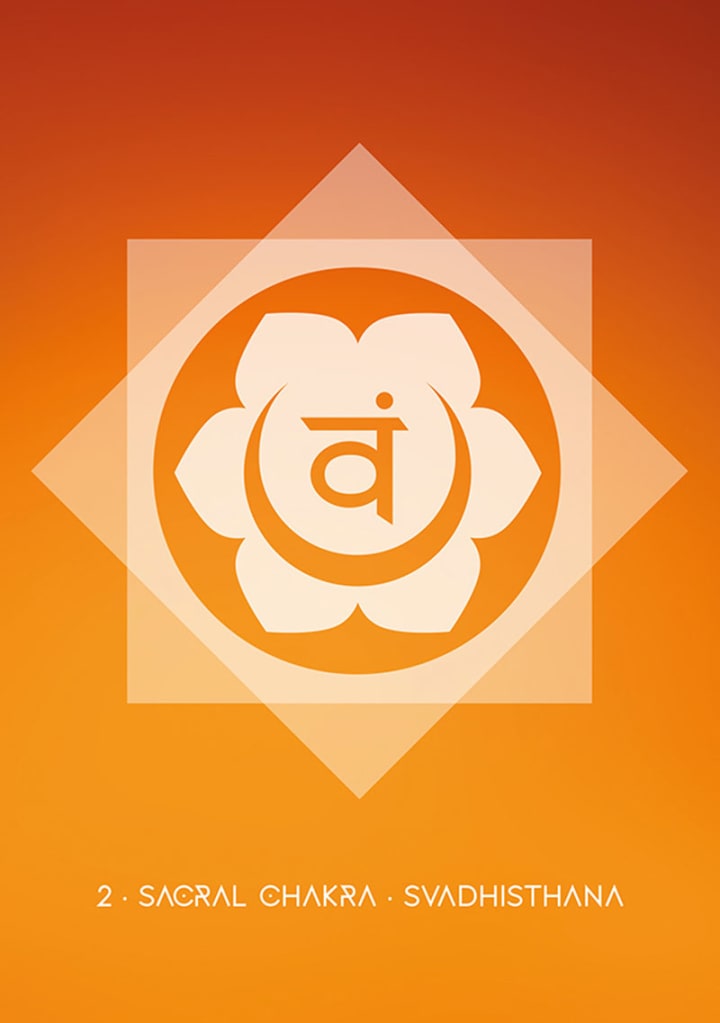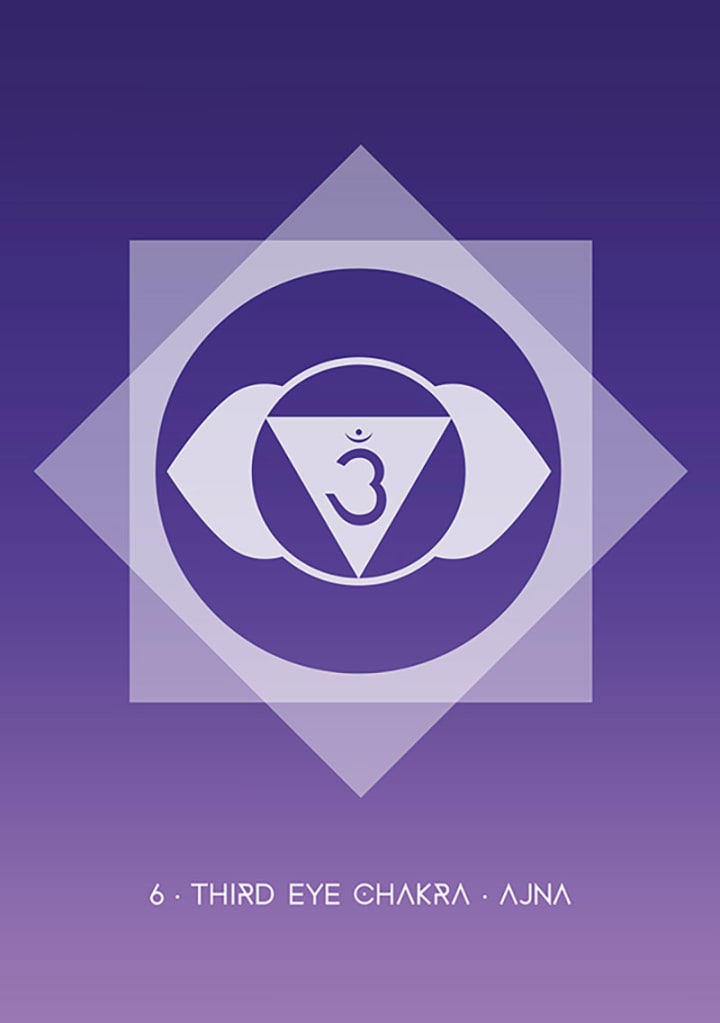7 Chakras for Beginners
Don’t let the natural energy within your body stop flowing! Let these 7 chakras for beginners keep you (and your energy) moving!

Chakras for beginners will help you learn the importance of the seven energy chakras inside the body. These centers align with one another and allow for the natural flow of energy to maintaining health and wellness. When a chakra becomes blocked or misaligned with the other six, the flow of energy is restricted and the body responds with anxiety, and physical and mental imbalances, often in the areas of the actual blockage. This article will teach you how to recognize the areas where a blockage may be responsible for physical and emotional distress. Meditation, yoga, color energy, and crystal energy are traditional techniques used to maintain physical and emotional health by keeping your energy fluid. These seven chakras for beginners will help you to understand these connections which will result in the ability to cleanse, unblock, and activate your chakras.
Root Chakra

Illustration by Dharani Bassols
In order to derive the most benefit from all of the chakras, it is important to begin work at the root chakra. The Sanskrit word of this chakra is mooladhara, which means “root.” The root chakra is located in the tailbone area on the base of the spine and rules the adrenal gland. This chakra represents your emotional, spiritual, and intellectual foundation. It is also closely associated with all forms of strength including financial stability, food, and physical protection. When your root chakra is misaligned you may feel out of control and out of synch with the world. Correcting the root chakra alignment helps you regain inner strength and control in your life. The color most associated with the root chakra is red, the color of passion and strength. When working with the root chakra, the recommended crystals are black tourmaline, bloodstone, red jasper, and obsidian. Yoga poses that strengthen the root focus on foundation. The tree and bridge poses emphasize strength and the spine while the corpse, easy, and lotus pose physically connect you to the ground. The root chakra meditative affirmation is, “I am.”
Sacral Chakra

Illustration by Dharani Bassols
The second chakra in the body is the sacral chakra. The Sanskrit word for this chakra is swadhisthana, which means “one’s own base.” The sacral chakra is located in the lower abdomen approximately 2" above the tailbone just below the belly button. The glands affected by the sacral chakra are the gonads, the ovaries in the female, and the testes in the male. The sacral chakra governs sexuality, pleasure, reproduction, abundance, creativity, and passion. A healthy sacral chakra allows you to connect with others, seek out and accept new experiences, and view the world creatively. When the sacral chakra is misaligned, you are unable to take pleasure in everyday life. You may find you have a lowered libido, lack the initiative, or interest in things that normal excite you, and lack the desire to be productive. When working with the sacral chakra, the color orange is recommended. The crystals used for sacral chakra work are orange and coral calcite, citrine, orange aventurine, and amber. Movements and poses that will aide with the realignment of the sacral chakra are the cobra pose, pigeon (or double pigeon) pose, the frog pose, or the happy baby pose. These poses actively stretch and realign the pelvis and surrounding areas. The sacral chakra meditative affirmation is “I feel.”
Solar Plexus Chakra

Illustration by Dharani Bassols
The third chakra is called the solar plexus chakra. The Sanskrit word for this chakra is manipura which means “city of jewels.” The solar plexus chakra is located in the upper abdomen area and is associated with the pancreatic gland. Emotionally, this chakra controls self-worth, self-confidence, and self-esteem. A healthy and free flowing solar plexus chakra allows you to feel in control of your own life with confidence. The seven chakras for beginners suggest that a blocked solar plexus chakra can result in a feeling of worthlessness and the inability to value yourself and your contributions to your world. When working with the solar plexus chakra, you should consciously wear yellow. In addition, the crystals recommended for use with the solar plexus chakra are amber, citrine, tiger’s eye, lemon quartz, and yellow jasper. Movements and poses for the solar plexus chakra should seek to encourage breathing. The poses which encourage the health of the solar plexus chakra are the corpse pose, the child’s pose, the warrior III pose, and the plank. The solar plexus chakra deals with a strong sense of self so the meditative mantra used when working in this area is “I do.”
Heart Chakra

Illustration by Dharani Bassols
The fourth chakra is called the heart chakra. In Sanskrit it is known as the anahata which means "unhurt, unstruck, and unbeaten.” The heart chakra is found in the chest just above the heart and is considered to be the most central chakra of the body. It rules the thymus gland which is responsible for regulating the immune system. A healthy thymus is a healthy body. Emotionally, the heart chakra is in charge of our feelings of love, peace, compassion, and kindness. A misaligned or blocked heart chakra can leave you feeling bitter, angry, and unloved. An ailing thymus gland coupled with a blocked heart chakra can wreak havoc on the immune system resulting in the feeling of weakness, general malaise, and the inability to feel connected to your partner or loved ones. When working with the heart chakra, the seven chakras for beginners suggest wearing the refreshing and youthful color green. Green crystals such as jade, green tourmaline, and green aventurine have the most impact on the heart chakra, but rose quartz also helps to maintain this area. The cow/cat pose, the cobra pose, the camel pose, and the bridge pose in yoga prove very beneficial to keeping the heart chakra open. As anticipated, the affirmation mantra for the heart chakra is “I love.”
Throat Chakra

Illustration by Dharani Bassols
The throat chakra is called the vishuddhi in Sanskrit which means the “pure.” This chakra is located in the throat and is associated with the esophagus, throat, jaws, and neck vertebrae. The thyroid gland, which is responsible for maintaining a healthy metabolism, is ruled by the throat chakra. Emotionally, the throat chakra is the key to all forms of expression. If this chakra is blocked your ability to communicate with yourself or others may be impaired. The dominant color for the throat chakra is blue and the crystals most effective to maintaining this chakra’s health are lapis lazuli, turquoise, and aquamarine. Yoga practices and positions that have the greatest effect on the throat chakra are neck rolls, the fish pose, the little cobra pose, the lion pose, and the plow pose. The appropriate affirmation mantra for this chakra is “I speak.”
Third Eye Chakra

Illustration by Dharani Bassols
The third eye chakra is located between the eyes on the forehead. In Sanskrit it is called the anja which means “center of knowing or monitoring.” The third eye chakra influences the pituitary gland which is responsible for sending out messages to all other glands in the body specifically relating to growth and development. Emotionally, this chakra is responsible for your ability to focus on the world around you and perceive “the big picture.” If your third eye chakra is blocked, you lose the ability to use your intuition and imagination and your ability to make larger decisions will be inhibited. The preferred color to keep this chakra open is indigo. The most effective yoga poses for this chakra are child’s pose with the forehead on the ground, closed eye sun salutation, and eagle pose. The meditative affirmation for the third eye chakra is “I see.”
Crown Chakra

Illustration by Dharani Bassols
The final chakra in the body is called the crown chakra and is located at the very top of the head. The Sanskrit word of this chakra is sahasrara which means “thousand petaled,” a fitting description for the brain, the birth place of all thought and being. This chakra rules the pineal gland which regulates biological cycles which includes healing sleep. Your crown chakra helps you connect to your spirituality and inner and outer beauty. This is the ethereal chakra and the one that connects you to the divine. When the crown chakra is blocked, many feel disconnected from the world around them and the inability to perceive bliss as well as the inability to sleep and feel well rested. White is the preferred color for working with this chakra and the best crystals to use are diamonds, clear quartz, and selenite. The most beneficial yoga poses for this chakra are the supported head stand, the supported shoulder stand, the plow pose, the tree pose, and the warrior I pose. The crown chakra affirmation mantra is the mantra of the self, “I know.”
Understanding the connection between mind, body, and chakras is your first step to maintaining daily health, emotional wellbeing, and vitality. These seven chakras for beginners is your very first step on a lifetime journey toward happiness, balance, and self-love.
About the Creator
Mackenzie Lu
Namaste. Active yogi and life enthusiast. It has become her mission to spread the benefits of having the mind, body, and soul in tune with one another.






Comments
There are no comments for this story
Be the first to respond and start the conversation.